Italy’s rich culinary history has developed with a variety of influences including geography, topography, climate, and the skills of the home cooks working with available ingredients.
Northern Italian Cuisine
In north Italy, the climate can range from cool to very cold in winter. Signature dishes there reflect the richness of this dairy-producing, sometimes mountainous region: white truffles with eggs, risotto cooked with delicate broth, creamy polenta rich with butter, classic bean soup called paste e fagioli, and bollito misto, mixed boiled meats served with piquant green and warm red sauces. The cuisine tends to be lightly prepared and simple.
Southern Italian Cuisine
Southern Italy is warm and rich with Mediterranean influences. The cuisine here is savory, vibrant, and full-flavored featuring dishes. Examples include seafood salad (insalata di mare), pizza and pizza-style sauces, pasta with red sauces, fresh tomatoes, basil, mozzarella flavored with olives, herbs and pesto.
Central Italian Cuisine
In central Italy, the fruity olive oils of Tuscany and Umbria flavor elegant, yet rustic and simple food. T-bone steak, grilled and served with olive oil, pepper and lemon, white beans and garlic, hand-made pastas, Parma ham and proscuitto, and lasagna Bolognese predominate.
Cuisine from the Italian Islands
The sea influences island cuisine, with squid with pasta, or fried as in calamari, sardines, pastas sauced with robust Sicilian garlic and tomato sauces, and veal chops with rosemary and garlic. Flavors are robust and lots of spice are the hallmarks of Italian island cooking.
Always Bread
Each region shares a love of bread and eats it at each meal except with pasta. Bread is usually eaten without butter, and it is frequently used to mop up any delicious sauces left in the dish.
Related Articles

How to Make a Foil Wrapped Potato
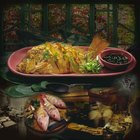
How to Cook a Whole Fish Jamaican Style

Fish & Pasta Meals

Different Types of Food in India

Uses for White Wine Vinegar
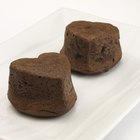
What Is a Souffle Dish?
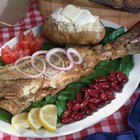
Cooking Jamaican Jerk Catfish

How to Cook Silver Fish Filipino Style

How to Cook Sole Fillets With Butter ...

How to Cook Sailfish

List of Latin American Foods

What Do You Serve With Lobster?
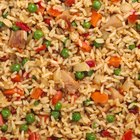
How to Cook Arroz Chaufa

Facts About Italian Cuisine

Types of Asian Food
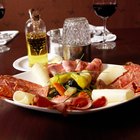
Pairing Food With a Super Tuscan Wine

How to Prepare Pre Cooked Shrimp

What Meat Pairs With Sangria?
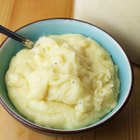
How to Make Cornmeal Polenta
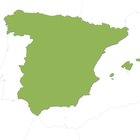
Description of Spanish Foods
References
- Essentials of Classic Italian Cooking; Marcella Hazan; 1992
Writer Bio
SE Gall is a freelance writer living in Orlando, Fla. During the course of her 20-year career, she has worked as an event planner, a marketing executive, and has consulted for non-profit associations, arts, educational and charitable organizations.